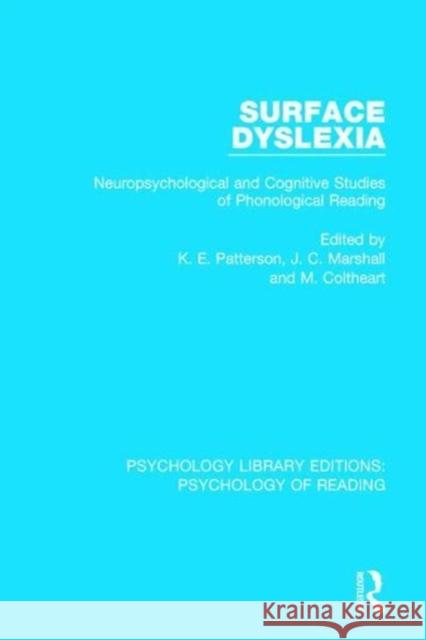Surface Dyslexia: Neuropsychological and Cognitive Studies of Phonological Reading » książka
Surface Dyslexia: Neuropsychological and Cognitive Studies of Phonological Reading
ISBN-13: 9781138090941 / Angielski / Twarda / 2017 / 596 str.
Surface Dyslexia: Neuropsychological and Cognitive Studies of Phonological Reading
ISBN-13: 9781138090941 / Angielski / Twarda / 2017 / 596 str.
(netto: 919,17 VAT: 5%)
Najniższa cena z 30 dni: 906,73 zł
ok. 16-18 dni roboczych.
Darmowa dostawa!
A child with developmental dyslexia or an adult with a reading disorder following brain damage might read the word shoe as ‘show’, why does this happen?
Most current information processing models of reading distinguish between two alternative procedures for the pronunciation of a printed word. The difference between these concerns the level at which orthography is translated to phonology in one, the word-level procedure, a word is read aloud with reference to knowledge specific to that whole word. In the other, the sub-word-level procedure, a printed word is pronounced with reference to knowledge about smaller segments which occur in many different words.
Both procedures contribute to normal skilled reading and its acquisition. But if one of the procedures is disrupted, then oral reading will be forced to rely on the alternative routine. Surface dyslexia is a general label for any disorder of reading which results from inadequate functioning of the word-level procedure and in consequence abnormal reliance on sub-word level translation from orthography to phonology.
Originally published in 1985, this book provides new evidence about the diverse manifestations of surface dyslexia in adult neurological patients and in children with developmental disorders of reading. The data are drawn from speakers of a range of languages with distinct orthographies. Process models for the pronunciation of print are elaborated, and an appendix gives neurological information on the patients reported.











